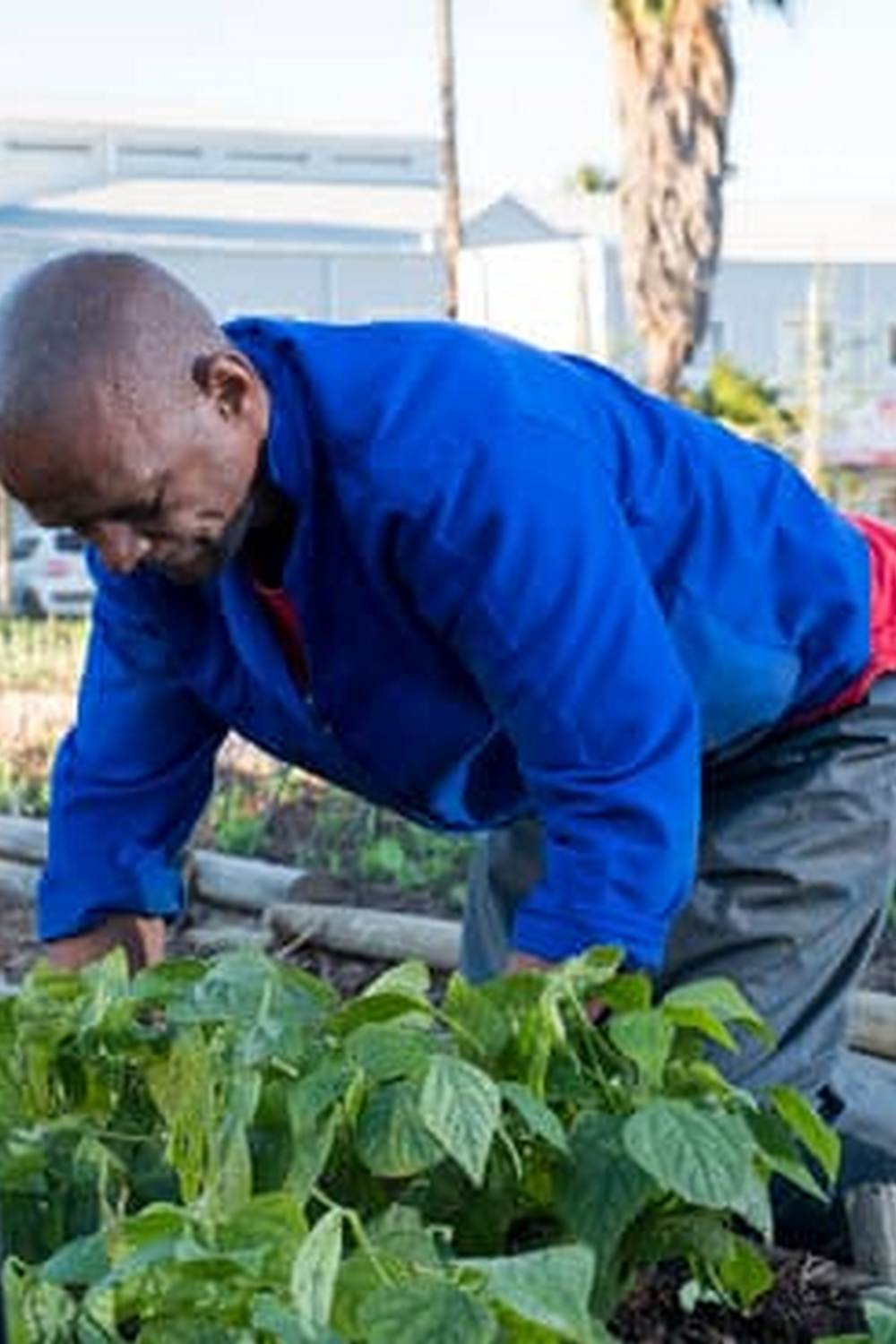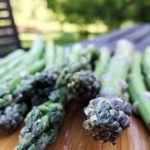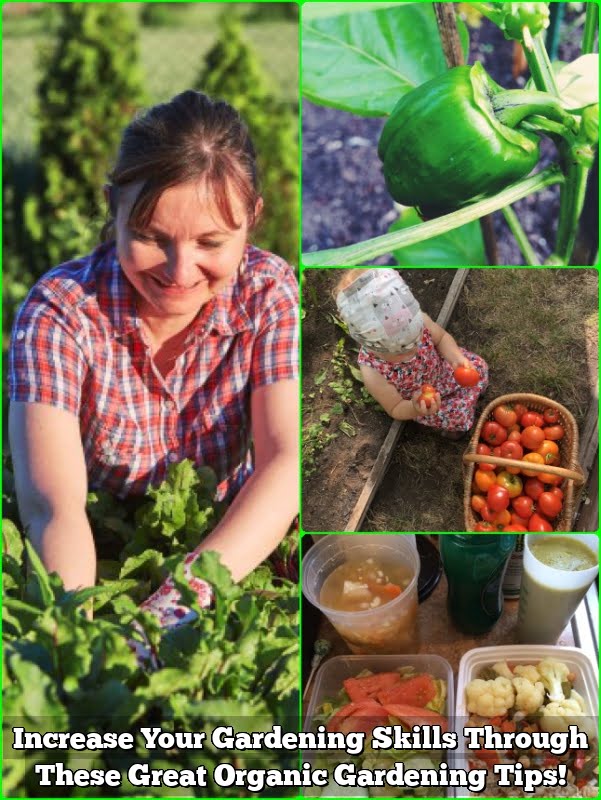Intense vegetable gardening, also known as intensive gardening, is a practice that involves maximizing the yield of vegetables in a small space. This method allows gardeners to grow a large amount of food in a limited area, making it particularly appealing for urban or small-scale gardeners with limited space. The benefits of intense vegetable gardening are numerous, including higher yields, efficient use of resources, and the ability to grow fresh produce year-round.
One of the key aspects of intense vegetable gardening is selecting the right location for your garden. This includes considering factors such as sunlight exposure, soil drainage, and proximity to water sources. In this article, we will discuss tips for choosing the perfect spot for an intense vegetable garden and how to make the most of your available space.
In addition to location, proper soil preparation is crucial for successful intense vegetable gardening. We will provide detailed guidelines on how to prepare the soil for optimal plant growth and high yields. By understanding the concept and benefits of intense vegetable gardening, you can learn how to maximize your garden’s potential and enjoy a bountiful harvest throughout the year.
Selecting the Right Location
When starting an intense vegetable garden, one of the most crucial factors to consider is the location. The success of your garden largely depends on where you choose to plant it.
The ideal spot for an intense vegetable garden should receive at least 6-8 hours of direct sunlight daily and have easy access to water. Additionally, it should be well-drained, away from strong winds, and free from any potential hazards such as overhanging trees or buildings that could block sunlight.
Another important consideration when selecting the right location for an intense vegetable garden is proximity to your home. Having your garden close by makes it convenient for you to monitor and maintain, which can lead to better productivity and overall success. It also allows you to easily access your harvest for cooking and consumption.
Moreover, it’s essential to assess the soil quality in the chosen location. Conduct a soil test to determine its pH levels and nutrient content. This will help you understand if any amendments are necessary before planting. Ideally, the soil should be fertile, well-aerated, and rich in organic matter to support the growth of vegetables in an intense gardening setup.
| Factor | Consideration |
|---|---|
| Sunlight | 6-8 hours of direct sunlight daily |
| Proximity | Close proximity for easy monitoring and access |
| Soil Quality | Fertile, well-aerated, rich in organic matter |
Soil Preparation
Before starting an intense vegetable gardening project, it is crucial to assess the condition of the soil. Conduct a soil test to determine the pH level and nutrient content. This will provide valuable information about which amendments are needed to create an optimal growing environment for high-yield vegetables. Several home testing kits are available, or gardeners can send samples to a professional laboratory for analysis.
Once the soil analysis results are in, it’s time to prepare the soil for intense vegetable gardening. Based on the findings, add any necessary amendments such as lime to adjust pH levels or organic matter like compost, well-rotted manure, or leaf mold for improved structure and fertility. Mix these amendments thoroughly into the soil using a spade or garden fork, ensuring that they are distributed evenly.
Raised Beds and Container Options
For those with poor native soil or limited space, consider constructing raised beds filled with a custom mix of topsoil, compost, and other organic materials. This practice allows complete control over soil composition and drainage while also making maintenance more accessible.
Alternatively, container gardening is an excellent option for intense vegetable gardening on patios, balconies, or small yards. Growing in containers requires well-draining potting mix and regular fertilization since nutrients can leach out more quickly than in traditional ground beds.
When preparing the soil for intense vegetable gardening, attention to detail is critical for success. Each step ensures that plants have access to essential nutrients and thrive in their environment throughout their growing season.
Benefit of Mulching
Mulching is another essential task when preparing the soil for intense vegetable gardening. Applying a layer of organic mulch like straw, shredded leaves, grass clippings, or wood chips several inches deep helps conserve moisture by reducing evaporation from the soil surface. Furthermore, mulch acts as a natural weed barrier while also moderating temperature fluctuations around plant roots during extreme weather conditions.
Importance of Good Drainage
Lastly but importantly when preparing the soil for intensive vegetable gardens is ensuring proper drainage. Soggy soils can lead to root rot and other diseases that can compromise plant health and yields. To improve drainage in heavy clay soils or low-lying areas prone to waterlogging after rainfall events, consider incorporating organic matter such as compost into the topsoil layer along with creating ridges or raised rows when planting to encourage excess water runoff from heavy downpours.
Choosing the Right Vegetables
Intense vegetable gardening requires careful selection of the right vegetables to ensure a bountiful and successful harvest. When choosing which vegetables to grow in an intense gardening setting, it is essential to consider factors such as high-yield, fast-growing varieties that are well-suited to close planting and intensive care.
Some ideal options for intense vegetable gardening include leafy greens like spinach and lettuce, root vegetables such as radishes and carrots, as well as certain herbs like basil and cilantro.
Leafy greens like spinach and lettuce are perfect for intense vegetable gardening due to their rapid growth and ability to be harvested multiple times throughout the growing season. These vegetables thrive in close quarters and can be densely planted, maximizing space in an intense garden.
Similarly, fast-growing root vegetables like radishes and carrots are well-suited for intense gardening due to their ability to produce a plentiful harvest within a short period. Additionally, herbs like basil and cilantro are excellent choices for intense gardening as they require minimal space but provide a continuous supply of flavorful leaves for culinary use.
In order to achieve success with intense vegetable gardening, it is crucial to select high-yield, fast-growing vegetables that can withstand the close quarters of an intensive planting setup. By choosing the right vegetables for this type of gardening method, gardeners can maximize their productivity and enjoy a steady supply of fresh produce throughout the growing season.
| Vegetable Type | Ideal for Intense Gardening Because |
|---|---|
| Leafy Greens (Spinach, Lettuce) | Rapid growth, multiple harvests, thriving in close quarters |
| Root Vegetables (Radishes, Carrots) | Fast-growing, plentiful harvest within a short period |
| Herbs (Basil, Cilantro) | Continuous supply of flavorful leaves with minimal space requirements |
Planting Techniques
When it comes to intense vegetable gardening, proper planting techniques are crucial for achieving maximum yield. Here are some step-by-step instructions on how to plant and space your vegetables for the best results:
- Start by planning out your garden layout. Consider the mature size of each vegetable plant and make sure to provide enough space between each variety to avoid overcrowding. This will also help ensure adequate airflow and sunlight exposure.
- When planting seeds, follow the directions on the seed packet regarding depth and spacing. It’s important not to plant seeds too deep, as this can hinder germination. Use a ruler or measuring tape to space out your seeds evenly for optimal growth.
- For transplants, carefully remove them from their original containers and gently loosen the roots before planting them in the soil. Make sure to water them thoroughly after planting to help reduce transplant shock.
- Consider using companion planting techniques to maximize space and discourage pests. For example, planting marigolds alongside tomatoes can help repel nematodes, while growing basil near peppers can improve their flavor and deter pests.
- As your plants grow, be sure to regularly monitor their progress and adjust spacing as needed. Some vegetables may require thinning out once they start to mature in order to prevent overcrowding.
By following these step-by-step planting techniques, you can optimize the space in your intense vegetable garden and achieve a bountiful harvest of fresh produce throughout the growing season.
Intensive Care
Intense vegetable gardening requires diligent and meticulous care to ensure a bountiful harvest. Proper maintenance, watering, and fertilizing are essential components of successful intense gardening. To maintain the health and productivity of your vegetable garden, it is crucial to follow specific tips and tricks.
First and foremost, regular maintenance is key to the success of an intense vegetable garden. This includes tasks such as weeding, pruning, and overall upkeep of the garden beds. Weeds can compete with your vegetables for nutrients and water, so it’s important to keep them at bay. Additionally, maintaining proper spacing between plants is vital for adequate air circulation and sunlight exposure.
Watering is another critical aspect of intense vegetable gardening. It is essential to water your plants deeply and consistently, especially during periods of hot weather. A drip irrigation system or soaker hose can be beneficial for ensuring that water reaches the roots efficiently without wasting any.
Fertilizing plays a crucial role in providing the necessary nutrients for the vigorous growth of vegetables in an intense garden. Using organic fertilizers or compost can help replenish the soil with essential nutrients and improve its overall structure.
It’s important to monitor the nutrient levels in the soil and adjust the fertilization schedule according to the needs of different vegetables throughout their growing cycle. By following these maintenance, watering, and fertilizing tips, you can ensure that your intense vegetable garden thrives and produces an abundant harvest.
Pest and Disease Management
Identifying Common Pests and Diseases
Intense vegetable gardening can sometimes create the perfect conditions for pests and diseases to thrive. It is important for gardeners to be able to identify common culprits such as aphids, caterpillars, and powdery mildew. By regularly inspecting plants for signs of damage or illness, gardeners can take early action to prevent widespread infestations or outbreaks.
Natural Pest Control Methods
One effective way to manage pests in an intense vegetable garden is by encouraging natural predators. Ladybugs, lacewings, and predatory insects can help keep pest populations in check without the need for chemical pesticides. Additionally, companion planting with pest-repelling herbs and flowers like marigolds and basil can help deter unwanted insects.
Disease Prevention Techniques
Proper watering techniques are crucial for preventing the spread of diseases in an intense vegetable garden. Overhead watering should be avoided to minimize moisture on foliage, which can lead to the development of fungal infections. Additionally, sanitizing tools and keeping the garden tidy can help reduce the risk of disease spread. If necessary, organic fungicides can be used as a preventative measure against common plant diseases.
Harvesting and Succession Planting
In conclusion, intense vegetable gardening offers a plethora of benefits for those who are looking to maximize their garden’s output and efficiency. By carefully selecting the right location, preparing the soil, choosing the appropriate vegetables, and implementing planting techniques, gardeners can enjoy bountiful harvests from their intensive efforts. Additionally, learning how to provide intensive care to the plants and effectively managing pests and diseases are crucial aspects of maintaining a successful intense vegetable garden.
One of the most important aspects of intense vegetable gardening is understanding harvesting and succession planting. By strategically planning when and how to harvest crops, as well as when to replant for continuous production, gardeners can ensure a steady supply of fresh vegetables throughout the growing season. Harvesting at the right time not only provides delicious produce for consumption but also opens up space for new plantings, allowing for a seamless transition from one crop to another.
Ultimately, with proper planning and diligent execution of all the necessary steps in intense vegetable gardening, individuals can enjoy a thriving garden that yields an abundance of delicious vegetables. Whether it’s in a small backyard or a larger plot of land, anyone can experience the satisfaction and rewards that come from successfully implementing intensive gardening practices. With dedication and attention to detail, intense vegetable gardening can transform any outdoor space into a flourishing oasis of fresh produce.
Frequently Asked Questions
What Is Intensive Vegetable Gardening?
Intensive vegetable gardening involves maximizing the yield from a small garden space. This can be achieved through techniques such as intercropping, succession planting, and vertical gardening. The goal is to produce a high volume of vegetables in a limited area.
What Is the Most Difficult Vegetable to Grow?
One of the most difficult vegetables to grow is often considered to be asparagus. It requires a lot of patience as it takes several years for the plants to reach full productivity. Additionally, it has specific soil and climate requirements that can make it challenging to cultivate.
What Is High Intensity Gardening?
High intensity gardening refers to a method of growing plants in tight spacing or using specialized gardening techniques to maximize yields. This may involve practices such as square foot gardening, raised beds, or using season extenders like greenhouses or cold frames. The focus is on utilizing space and resources efficiently for optimal productivity.

If you’re looking to get into vegetable gardening, or are just looking for some tips on how to make your current garden better, then you’ve come to the right place! My name is Ethel and I have been gardening for years. In this blog, I’m going to share with you some of my best tips on how to create a successful vegetable garden.





